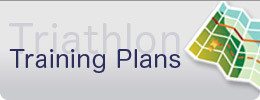There are two types of recovery and endurance athletes (especially triathletes training for 3 different sports each week) need to pay attention to both. Active recovery is an easy effort such as doing double arm backstroke after you finish a hard swim set or going for a walk on a rest day. Passive recovery uses physiological stimuli to aid in the recovery process. Examples include massage or a few minutes in the hot tub after swim practice.
Taking a proactive approach to recovering from your triathlon workouts will help prevent injuries and burnout. It will also help you reach your potential in the sport because your body will be prepared to perform when the time comes. That being said, there is no one superior, catch-all way to recover. In fact, while a massage may be exactly what one athlete needs, another athlete may hate the idea of being touched by a stranger. So don’t be afraid to add or subtract from the suggestions we list below to find what suits you best.
Naps
Naps are a great way to give your body extra rest but they should not be used as a substitute for a good night’s sleep. In a recent Triathlete.com article, the Clinical Program Director of Athlete Services at the Center for Sleep & Human Performance states that it takes a 45-minute nap or longer for the body to start releasing hormones. However, she says that shorter naps can help with mental acuity, so even catching a few zzz’s between your morning swim practice and a meeting can be a good idea.
Body Work
Body work includes massage, chiropractic adjustments, dry-needling, acupuncture, trigger point, and more. We recommend you try to see someone who has experience as an athlete or working on athletes. They will know how to treat your aches and pains better than someone who specializes in hot stone massages.
Foam Rolling/Stretching/Yoga
According to a study in the Journal of Athletic Training, foam rolling for 20-minutes post exercise decreases DOMS, delayed-onset muscle soreness, and helps reduce muscle soreness (see 9 different foam rolling exercises). Stretching helps with range of motion and prevents stiffness going into the next workout. Yoga has similar benefits to stretching, but it also allows you to focus on breathing and your mindset.
Time with Family and Friends
Forget about your training for a few hours while you enjoy the company of others. Laughing and engaging in meaningful conversations can reduce stress. It isn’t just the muscles that need to recover, your brain does too. Note what other activities relax your mind and add them to your list of recovery options.
Additional Tips for Recovery
One reason pro athletes are able to train as hard as they do is because they have the time to recover and they take it very seriously. Even without as much time you can look at your surroundings and find little ways to help your body. For instance, if you are sitting for a long time, is there a way for you to prop your feet up? Is there an empty area of your house where you can set up a mat and a foam roller? Maybe you are close enough to your group run workout that you can bike there for an easy warmup and use the time riding home as active recovery.
If you are feel more and more fatigued you may not be getting enough rest. Instead of suffering through another sub-par workout maybe you should substitute it with a nap, massage, high-quality meal, or time with friends.
Good luck!
Krista
—
 Multiple IRONMAN Triathlon finisher and overall female winner of the Galesburg Half Marathon, Coach Krista Schultz has literally helped thousands of endurance athletes and non-athletes achieve their success through coaching, consulting, clinics, seminars and performance testing. She has written articles for magazines like Triathlete Magazine and Runner’s World and is the founder of She Does Tri for Women, which focuses on helping females achieve confidence through health and fitness.
Multiple IRONMAN Triathlon finisher and overall female winner of the Galesburg Half Marathon, Coach Krista Schultz has literally helped thousands of endurance athletes and non-athletes achieve their success through coaching, consulting, clinics, seminars and performance testing. She has written articles for magazines like Triathlete Magazine and Runner’s World and is the founder of She Does Tri for Women, which focuses on helping females achieve confidence through health and fitness.


